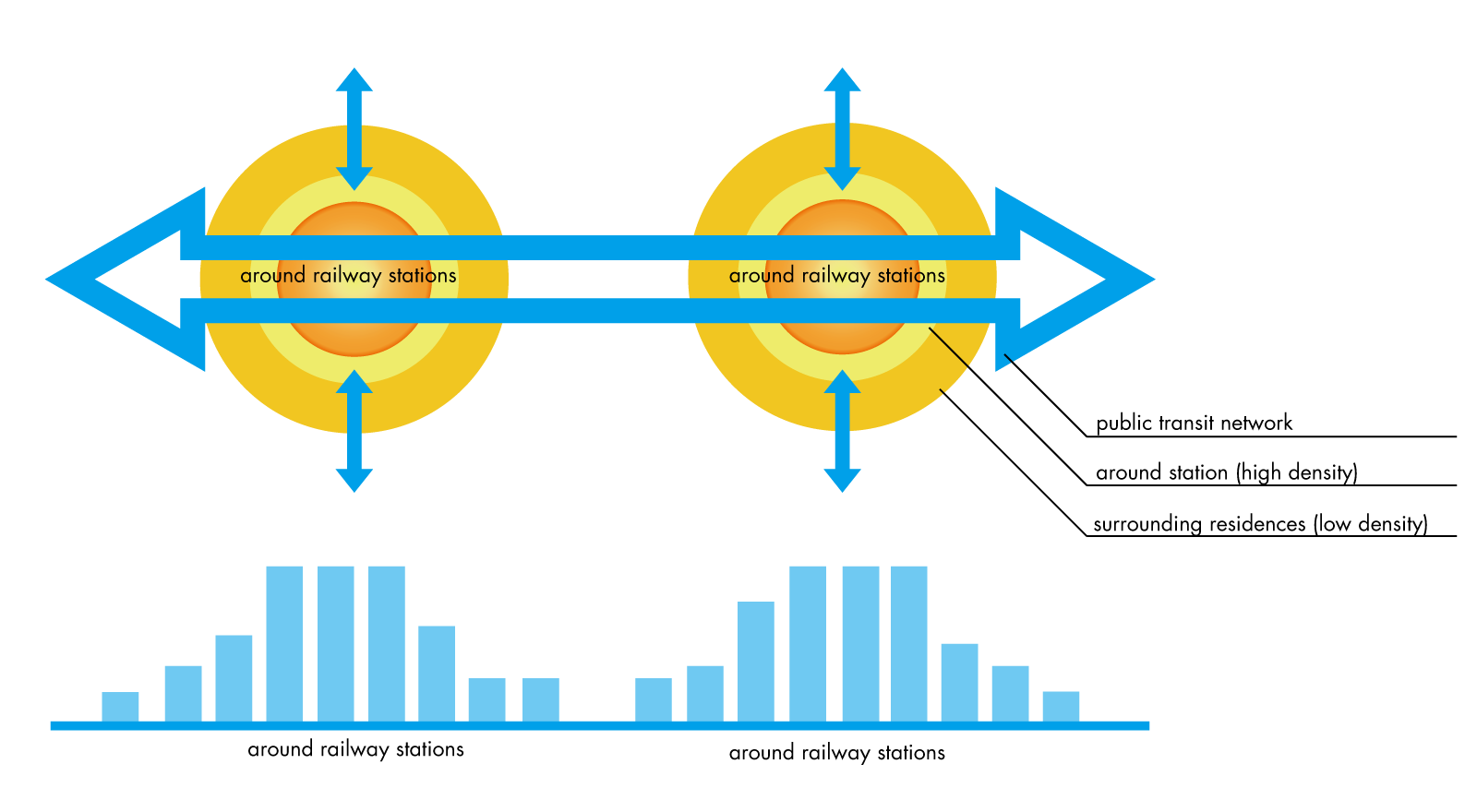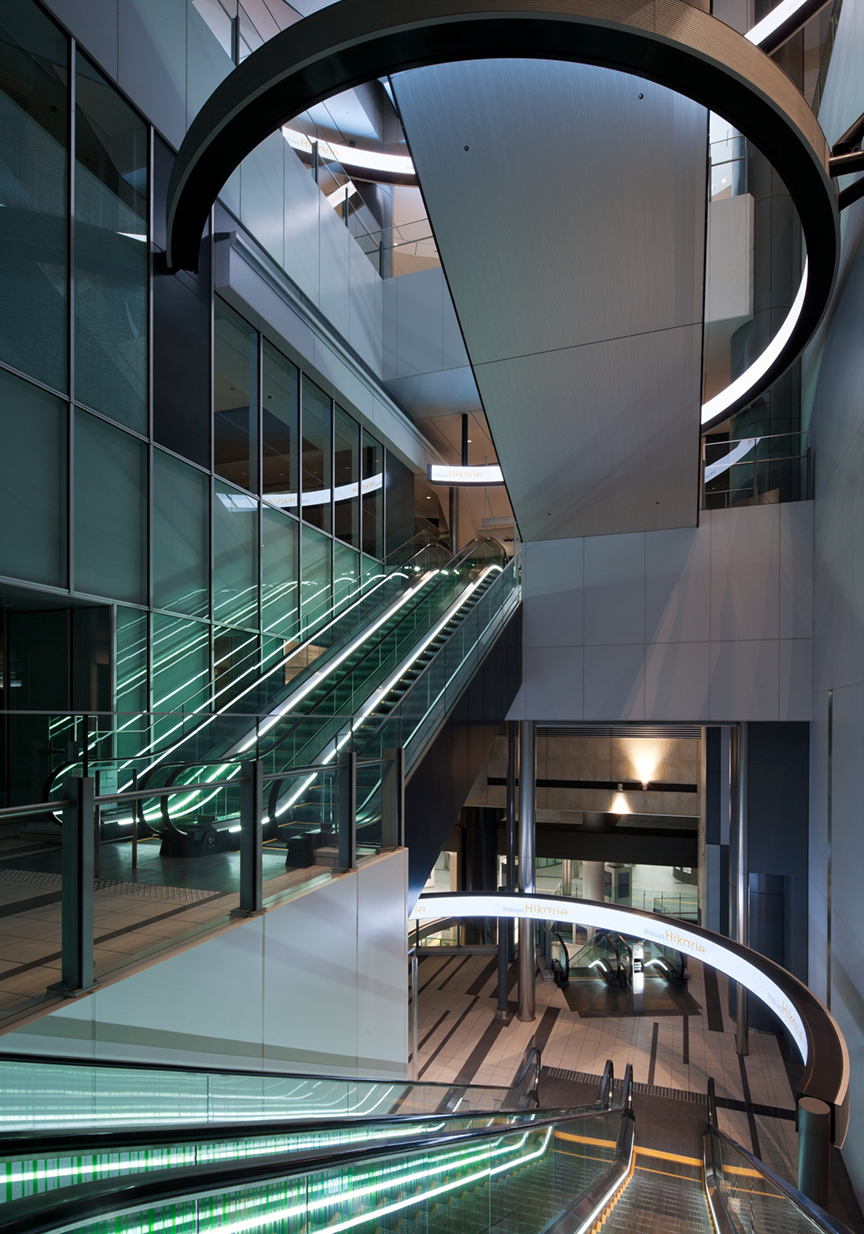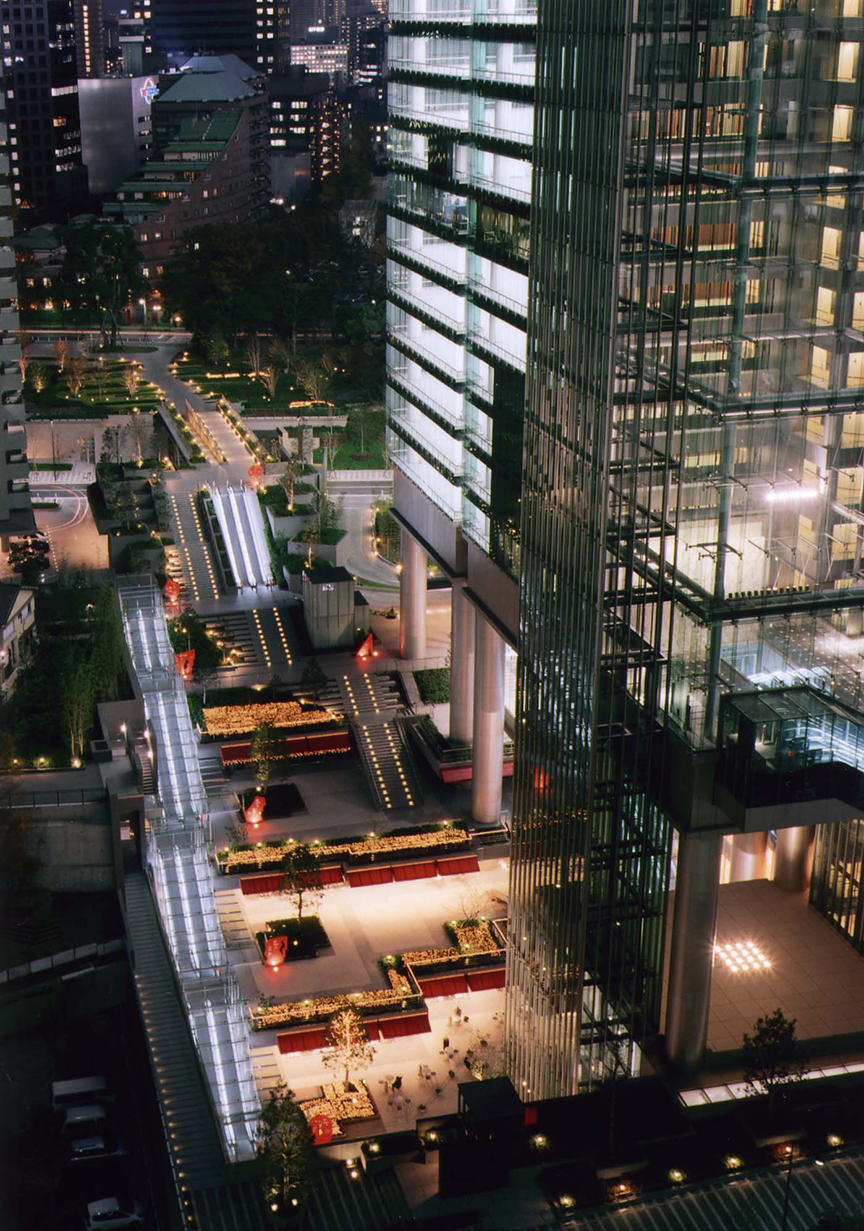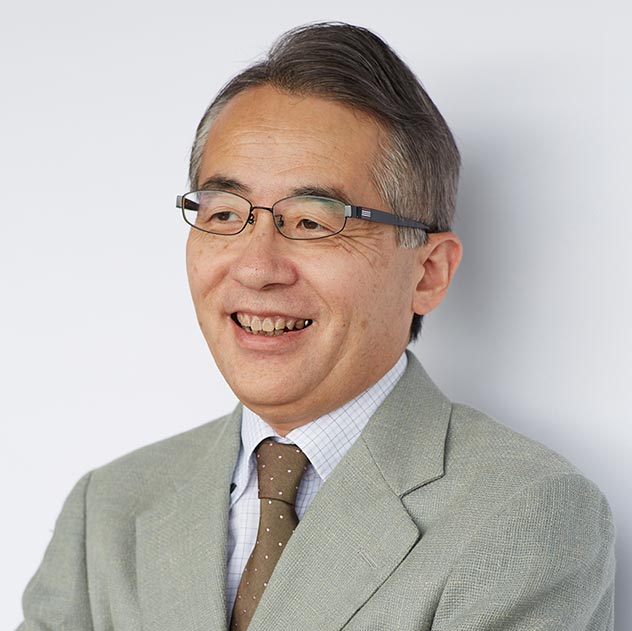Practicing and Propagating TOD to the World
Scroll Down
Trains, buses, and other forms of public transit are indispensable in the urban lifestyle of the Japanese. Public transportation is used for a broad range of purposes, from morning and evening commutes to and from work and school, to business activities, everyday shopping, and weekend trips. This inevitably results in more occasions for people to use facilities like train stations and bus terminals, leading to a concentration of diverse urban functions at or around stations that attract transit users. Real estate prices are also basically decided on their location in relation to the station. The rental fees of tenements are directly linked with their walking distance from the station, and offices and shops that can be reached from the station without the need of an umbrella are highly appraised for their value.
CATEGORY
 TOD concentrates urban activities around railway stations
TOD concentrates urban activities around railway stations
-
 “Urban core” vertically links multiple levels of pedestrian traffic
“Urban core” vertically links multiple levels of pedestrian traffic
(Shibuya Hikarie) -
 Izumi Garden was integrally designed and constructed with the subway station
Izumi Garden was integrally designed and constructed with the subway station
But this is not just a simple matter of exporting Japanese-style TOD projects, because the social structure that forms the basis for these developments is not necessarily the same as that of Japan. In Japan, specific circumstances gave birth to the necessity of advancing TOD. These conditions include difficulty securing space to build roads because of the country’s small land area; high land prices requiring efficient use of land (space); tolerance of high-density living; relatively mild climate making it easy to move on foot; and little social inequality resulting in public safety on public transportation. This does not necessarily apply for cities overseas. One clear example is seen in the aggressive efforts taken in Japan to make underground connections between stations and urban developments. This is not always the case overseas, where some authorities do not want developments connected to “dangerous” stations.
Even though such circumstances exist, cities need to introduce TOD in order to resolve traffic congestion and for the efficient development of the economy. With a full understanding of the dilemma they face, Wisdom Luxury is currently advancing overseas projects that make the best of Japanese-style TOD planning and design. In doing so, it is also important that these projects are not only “hard” plans, but an integration of both “hard” and “soft.” We are offering proposals that include pedestrian ITS (informational traffic system), which make TOD more pleasant, as well as proposals for legal systems and institutional structures to coordinate matters with the various stakeholders involved in redevelopment projects around the station. We hope to make contributions that will lead to the future export of a comprehensive package of such solutions.

